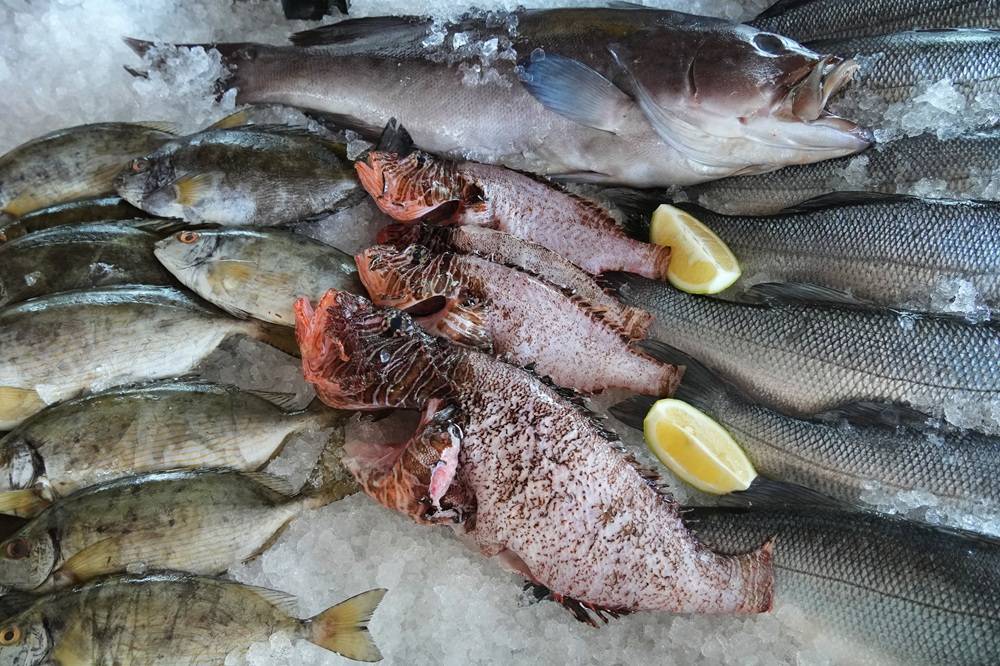Farmer Ghassan Hassan and his laborers have been toiling tirelessly to harvest olives in fields near Lebanon's southern border, undeterred by nearby Israeli bombings and the whirr of surveillance aircraft.
Olive harvesting is a main source of income for villagers, but this year the season has coincided with tit-for-tat cross-border exchanges between Israeli troops and the Iran-backed Hezbollah as the Israel-Hamas war rages in Gaza.
"Aircraft hover over our heads day and night while we work, making the workers anxious. They sometimes get so frightened they leave," said Hassan, in his 50s, who is picking green and purple olives near the town of Hasbaya.
"This year is unlike the ones before," he added.
As he spoke, one of his workers received news his village had been hit by a bombardment.
Stopping work, he frantically tried to call relatives with trembling hands before hearing they were all safe, breathing a sigh of relief as he returned to work.
Since Hamas fighters stormed across the Gaza border on October 7, Israeli warplanes have been bombarding the Palestinian territory, killing more than 8,500 in violence that has also triggered a wave of unrest along the Israel-Lebanon border.
So far, at least 63 people have been killed in Lebanon according to an AFP tally, mostly combatants but also five civilians.
And eight people have been killed in Israel, among them both soldiers and civilians.
The escalating exchanges of fire have made olive picking near the border particularly dangerous.
But despite the frequent nearby shelling and non-stop buzzing of reconnaissance aircraft, the farmers have not stopped coming to their lands.
Lebanese farmers mostly rely on Syrian laborers during harvest season, but many living near the border have fled, Hassan said.
"It has become difficult for us to find workers," he told AFP.
So far, thousands have fled the south due to the border tensions with nearly 29,000 people displaced across the whole of Lebanon, figures from the UN's International Organization for Migration show.
Israeli attacks have also set olive groves and greenery ablaze, with Agriculture Minister Abbas Al Hajj Hassan accusing Israel of carrying out white phosphorus attacks, saying the incendiary substance had burnt down 40,000 olive trees.
Rights groups and Lebanese officials have repeatedly accused Israel of using white phosphorus which catches fire on contact with the air and can inflict serious burns -- allegations Israel has previously denied.
Farmer Hussein Shaheen, in his 70s, was one of those picking the tiny fruit outside Hasbaya as explosions resonated in the distance.
But he has been clear with his workers: they must have the olives packed up and ready for transport so they can move quickly if shelling hits.
Across the border regions of Hasbaya and Marjayoun, families and laborers are out and about in the olive groves, resting in the shade or climbing trees to pick the fruit.
"People are risking their lives" because olives are their main source of income, Shaheen said.
"Every year, they await harvesting season so they can sell olive oil and make a living," he said.
"When bombs fall, they go home" only to return the next day, he said.
The Hasbaya region counts about a million and a half olive trees, according to Rasheed Zuwaihed of the local olive cooperative.
"Whether there is bombing or not, people have no choice but to go out to the fields," said the 73-year-old, a retired teacher who owns an olive press.
"They certainly take risks, but they are forced" to do so to survive, he said.
In a nearby field, the Shaar family are picking olives together.
"We are not afraid, but the buzzing of aircraft... is playing with our nerves," said Mona Shaar, 54, smiling as she gathered olives in her apron.
Some of her relatives covered the ground with a plastic sheet to catch the fruit while others took turns hitting the branches with a stick to harvest the fruit.
Working nearby, Mona’s cousin Adnan said he's used to the sound of explosions, now a regular occurrence in the area.
"I know people who couldn't harvest because they are closer to the border and under bombardment," he told AFP.
"They left their harvest, their land... It's hard," he said.
"Your harvest is like your child, you care for it as you would for your own son."










